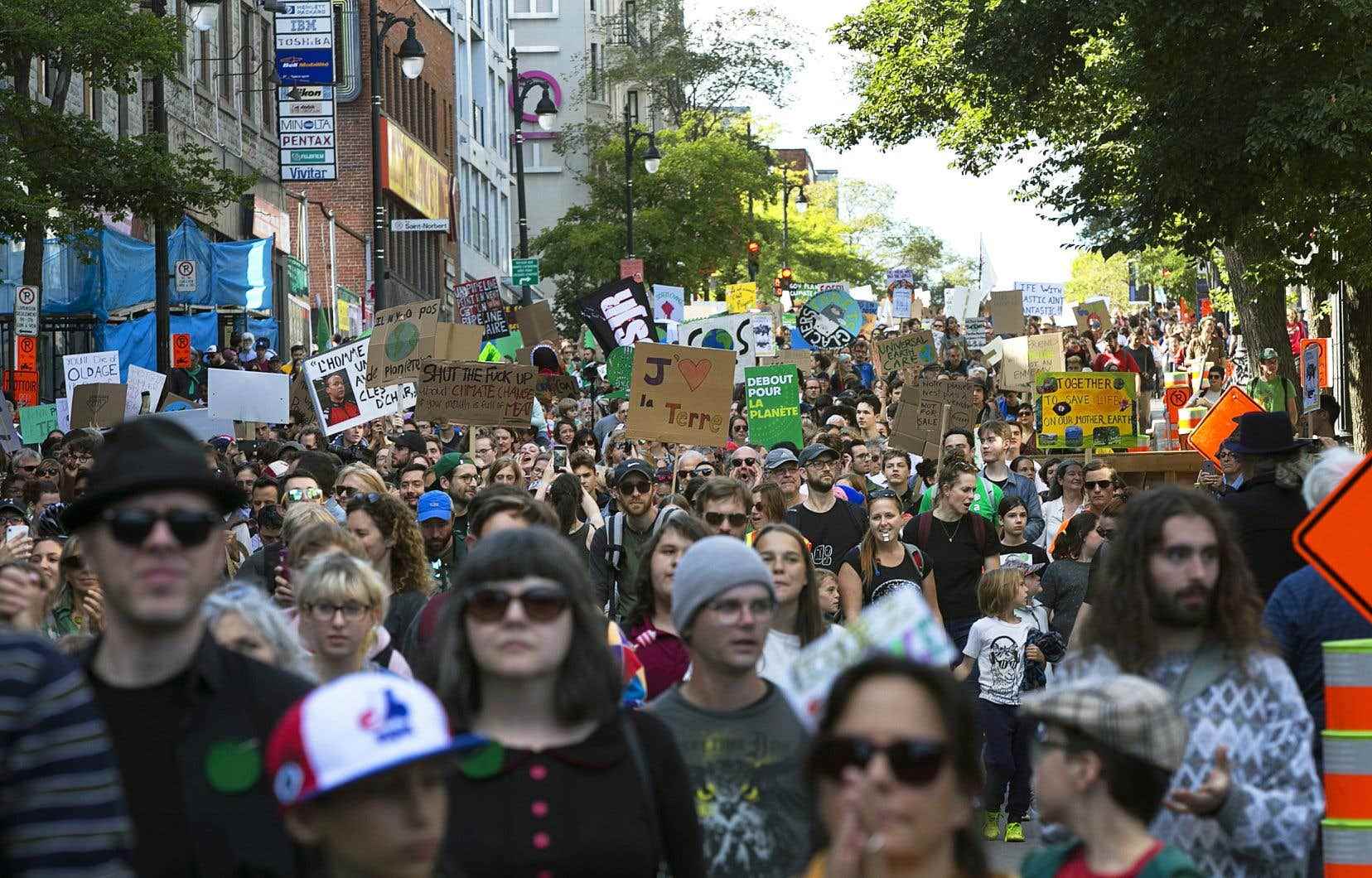Under public pressure and repeated climatic disasters, the traditional media are talking more than ever about the environment, a subject that has long been relegated to the background. But despite the creation of programs dedicated to the subject and an unprecedented number of specialized journalists, work remains to be done to ensure that the climate emergency is covered in depth.
“I’ve wanted to do a program on the environment for 20 years, I can’t wait! says Catherine Perrin, who can’t get over seeing her wish come true, finally. From Sunday, the host will take the helm of Green light on ICI Première, a weekly program devoted entirely to the environment.
Of course, we were already dealing with environmental issues on the various platforms of the public broadcaster, but this is the first time that we will be discussing it continuously on the air for an hour.
“We see it in the polls in recent years, the environment is the main concern of Canadians. We are seeing climate change more and more in our daily lives,” said Radio-Canada radio director Caroline Jamet. “People want to talk about it, but they also want it to be in a positive way. »
They will be served with Green light, since the environment will be tackled with a solution-oriented approach. Catherine Perrin’s team of columnists — her double agents, as she calls them — will be tasked with touring the various initiatives aimed at countering or mitigating climate change, by digging into studies and going to the meeting of the actors of change.
“We are not going to be jovial for all that, put on our pink glasses and say that making your own soap with olive oil is going to save the world”, specifies Catherine Perrin. The program is intended as a laboratory where we will approach “new ideas, concepts of solutions”, but with a “critical sense”, by “putting them to the test”.
She gives the example of free public transport, a subject discussed in the first broadcasts. “We are going to send a double agent to talk to users in Montreal to find out if the free subway on weekends has really changed anything for them. […] Is it a really good idea, free? Did it work well elsewhere? Why ? »
By informing listeners about the climate emergency and the solutions that exist, Catherine Perrin hopes above all to awaken the citizen in them. “We want to show that in addition to small gestures, it’s worth writing to your MP to get things moving or going to a municipal council to ask questions. The idea is not to be moralizing, but mobilizing. »
Multiple initiatives
Radio-Canada is not the only media to have taken this green turn in recent months. Its Anglophone counterpart, CBC, created a post of international climate correspondent in July. Journalist Susan Ormiston will tell the stories of people around the world who are experiencing the impacts of climate change. It will also be deployed urgently anywhere on the planet in the event of a climate disaster.
Last April, The duty for its part launched the Environment Pole, made up of 12 journalists from different coverage sectors. ” The duty has always had an interest in environmental issues. It is the first media in Quebec to have, in 1982, a reporter dedicated to the environment,” recalls its editor-in-chief, Marie-Andrée Chouinard. “To have today a pole [de couverture], is to send the powerful message that the environment is an issue that affects everyone so much that it cuts across all sectors. »
To The Press, there is also increased reader interest in environmental issues. The daily now has two reporters dedicated to this subject and recently decided to make its coverage more “constructive”. “We do portraits of ‘agents of change’, for example. We emphasize even more the original solutions. We also have a section on “green ideas” every week”, indicates its assistant editor, François Cardinal.
Among Quebecor’s media, the environment has also carved out a special place for itself over time. The TVA network recently decided to change the way it presents weather reports in order to better explain weather phenomena and their links with climate change. When redesigned in February 2021, the free newspaper 24 hours has also placed the environment among its coverage priorities. Not to mention the greater place given to the subject in the reports of the Quebecor Bureau of Investigation.
Work to do
“Better late than never,” says Amélie Daoust-Boisvert, assistant professor of journalism at Concordia University, who would have liked to see these initiatives flourish sooner. “It’s the big minimum, what is done. […] It is still the most important issue of our century. »
As part of her research, the professor is interested in Canadian media coverage of climate change. While she has seen an evolution in recent years, work remains to be done: “The problem is that there are spikes in coverage during a disaster, a climate summit, a major study or a political commentary. But why don’t we talk about the environment all the time? There is precisely room for investigation during these news lows. »
It is the role of the media, recalls the former journalist of the To have toto follow up and hound businesses and governments on their role in preserving the environment.
Despite her criticisms, she feels that good environmental journalism is being done across the country. The professor has just launched a newsletter with her students, Carbon paper, which brings together the best reports in the field. “It’s important to also highlight the successes of the media. »
